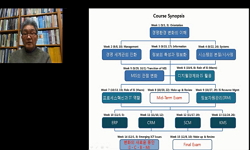Examined in this article is how the recognition of Sam-Han (三韓), which was the foundation of a notion (developed by the Shilla people) that suggested the Three Han entities had been one all along (三韓一統意識), originated and formed. Also e...
http://chineseinput.net/에서 pinyin(병음)방식으로 중국어를 변환할 수 있습니다.
변환된 중국어를 복사하여 사용하시면 됩니다.
- 中文 을 입력하시려면 zhongwen을 입력하시고 space를누르시면됩니다.
- 北京 을 입력하시려면 beijing을 입력하시고 space를 누르시면 됩니다.

삼한(參韓) 인식의 연원과 통일전쟁기 신라(新羅)의 천하관(天下觀) = The Origin of the Sam-Han (三韓) Recognition, and Shilla``s (新羅) View of the World (天下觀) during the Unification War
한글로보기https://www.riss.kr/link?id=A100126390
- 저자
- 발행기관
- 학술지명
- 권호사항
-
발행연도
2014
-
작성언어
-
- 주제어
-
KDC
900
-
등재정보
KCI등재
-
자료형태
학술저널
-
수록면
95-131(37쪽)
- 제공처
- 소장기관
-
0
상세조회 -
0
다운로드
부가정보
다국어 초록 (Multilingual Abstract)
Examined in this article is how the recognition of Sam-Han (三韓), which was the foundation of a notion (developed by the Shilla people) that suggested the Three Han entities had been one all along (三韓一統意識), originated and formed. Also examined is how Shilla viewed the other opponent countries during the Unification war. The term Sam-Han (三韓), appearing in Chinese historical texts, originally referred to the three Han entities on the Korean peninsula. Yet later, when all of these entities disappeared, it became a term used to refer to all the historical entities existing in the east of China in a generic sense, including Goguryeo (高句麗), which was not part of the Sam-Han legacy, as well as Joseon (朝鮮), which had existed well before the time of Sam-Han. Diplomatically, the Chinese Dang (唐) dynasty encouraged the three dynasties to get along with each other, and emphasized historical similarities shared by them (supposedly through Sam-Han), but Shilla never accepted or embraced such a notion. There are examples in 『Samguk Yusa (Tales of the Three Dynasties that Remain to be Told)』 or 『Samguk Sagi (History of the Three Dynasties)』, in which the Shilla people are depicted as referring to their own history as the history of Sam-Han, but in most cases they were rather expressions came from their descendants, the people of Goryeo. Being continuously harassed by all types of foreign invasions, Shilla needed an ideological notion that could enable itself to sustain and endure; hence, the Shilla people came to consider themselves as occupying the center of the universe. One expression revealing this type of view of the world was Gu-Han (九韓, nine Han entities), which was based upon the concept of Nine Types of Yet-to-be Civilized (``Gu-Ih``, 九夷). In theory, these Gu-Han units paid tribute to Shilla and were therefore conceptual figures essentially different from the Sam-Han units, which included Shilla itself.
동일학술지(권/호) 다른 논문
-
<기획> 근대 한국 구상의 사상적/제도적 성찰 : 개화기 조선의 民會 활동과 「議會通用規則」 -「의회통용규칙」의 유통과 번역 양상을 중심으로
- 연세대학교 국학연구원
- 류충희 ( Chung Hee Ryu )
- 2014
- KCI등재
-
<기획> 근대 한국 구상의 사상적/제도적 성찰 : 위당(爲堂) 정인보(鄭寅普)의 실학(實學)인식과 학문주체론 - 「양명학연론(陽明學演論)」을 중심으로 -
- 연세대학교 국학연구원
- 정덕기 ( Duk Gi Jung )
- 2014
- KCI등재
-
- 연세대학교 국학연구원
- 김진희 ( Jin Hee Kim )
- 2014
- KCI등재
-
석재(碩齋) 윤행임(尹行恁)의 육왕학(陸王學) 비판에 대한 인식형성 배경과 그 목적
- 연세대학교 국학연구원
- 남윤덕 ( Yoon Deok Nam )
- 2014
- KCI등재




 KCI
KCI 스콜라
스콜라



